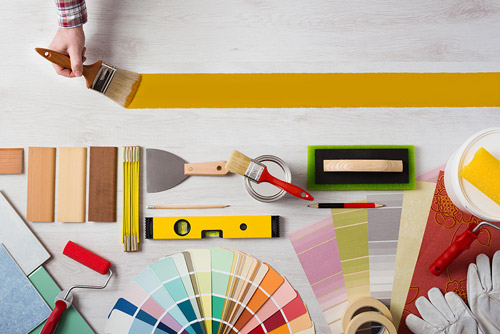
1. Red
Passionate & Aggressive
Red is a dominating colour which increases blood circulation, breathing rates and metabolism. It has a variety of meanings and is associated with both love and war, but the unifying factor in all meanings is a sense of importance.
2. Orange
Playful & Energetic
Orange shares the same energizing quality like red. It is generally playful and signifies health, suggesting vitality and vibrancy.
3. Yellow
Happy & Friendly
Yellow is a colour associated with happiness, but also activates the anxiety centre of the brain. It has the ability to stimulate and vitalize but has negative connotations as well.
Lighter shades of yellow play on the happiness aspects while its darker shades add more weight.
4. Green
Natural & Stable
Green represents the environment and the outdoors. It is the most balanced of all colours, lending an air of stability. It is also a popular choice as an accent and represents money and financial safety.
5. Blue
Serene & Inviting
Blue is one of the most popular colours and it inspires security and a feeling of safety. For this reason, blue is the choice of colour for banks. The calming effects of blue make it a friendly and inviting colour. According to studies, the colour blue also works as an appetite suppressant.
6. Purple
Luxurious & Mysterious
Purple creates an air of luxury and is associated with royalty. Lighter shades of purple bring to mind spring and romance, in particular lavender. Darker shades of purple add mystery and also makes the romantic elements more sensual.
7. Pink
Feminine & Innocent
Pink is interpreted as feminine and a colour that is quite popular for targeting female consumers. It is also traditionally used with love and romantic themes, along with red and light purple.
8. Brown
Earthy & Rustic
As a colour associated with the earth and trees, brown can add an outdoorsy feel, enhanced by its pairing with green. The tree connotations also lends a sturdy and reliable feeling.
9. Black
Powerful & Edgy
Black is considered the strongest colour of all. It adds an air of sophistication and elegance, and also mystery, however with bolder confidence.
10. White
Clean & Healthy
White pairs well with just about anything, making it ideal as a secondary colour. As a primary colour, though, white exudes cleanliness and chastity. Its association with 'good' and 'holiness' give it a pious and virtuous feeling as well, while its association with hospitals and medical staff give it a healthy feeling.
11. Gold
Luxury & Confidence
Gold has quite a few different meanings depending on culture. Worldwide, gold represents some variation of charm, confidence, luxury and treasure. It also has an element of prosperity and abundance.
12. Grey
Cool & Balanced
The colour grey is a timeless and practical colour which is associated with depression or loss. It affects the mind and body by causing mixed feelings. Light greys are feminine in nature while dark greys are masculine.
Hope you found this article informative in understanding various colour shades and the emotions that they evoke.